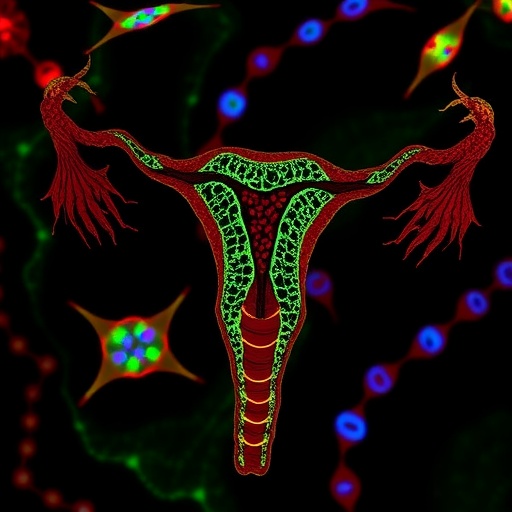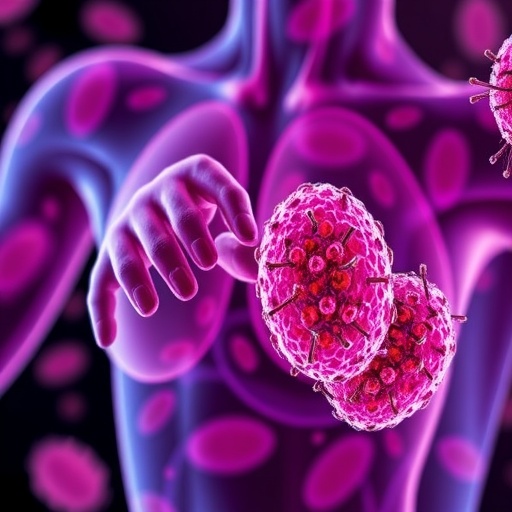In a groundbreaking international study, researchers have redefined the landscape of polycystic ovary syndrome (PCOS) by identifying four clinically distinct subtypes of this complex disorder. Published in the prestigious journal Nature Medicine, the study spearheaded by scientists at Karolinska Institutet leverages large-scale data analytics to unravel the heterogeneity of PCOS, a condition that affects approximately 11 to 13 percent of women of reproductive age worldwide. This landmark research paves the way for precision medicine approaches, fostering more personalized and effective treatment strategies for millions of women grappling with this multifaceted syndrome.
PCOS is traditionally diagnosed based on a constellation of symptoms including hyperandrogenism, ovulatory dysfunction, and polycystic ovarian morphology. However, its clinical presentation and associated metabolic complications have long challenged clinicians due to substantial variability among patients. To address this complexity, the study analyzed comprehensive clinical data spanning 6.5 years from over 11,900 women diagnosed with PCOS. Utilizing sophisticated data-driven methodologies, including cluster analysis of standardized hormonal and metabolic parameters, the research team was able to delineate four robust PCOS subgroups that exhibit distinct biochemical and clinical profiles.
The first subtype, labeled HA-PCOS, is defined by hyperandrogenism—elevated levels of circulating male sex hormones such as testosterone. Women in this group showed not only a heightened propensity for second-trimester miscarriages but also a significant prevalence of dyslipidemia, indicating abnormal blood lipid levels. This subgroup underscores the intersection of endocrinopathy and reproductive challenges in PCOS pathology, emphasizing the need for vigilant metabolic monitoring alongside fertility treatments.
Conversely, the OB-PCOS subgroup is characterized primarily by obesity and insulin resistance, reflected by higher body mass indices and impaired glucose metabolism. These individuals exhibited the most severe metabolic derangements among all subtypes, including an increased risk for type 2 diabetes mellitus and cardiovascular comorbidities. Paradoxically, despite a lower rate of successful live births, this group demonstrated a noteworthy capacity for spontaneous recovery from PCOS features over time, hinting at the dynamic nature of metabolic influences on ovarian function.
The third subtype, SHBG-PCOS, is distinguished by elevated levels of sex hormone-binding globulin (SHBG), a glycoprotein that regulates the bioavailability of sex steroids. Clinically, this subgroup manifests a milder phenotype with fewer infertility issues and the most favorable metabolic profile, featuring the lowest incidence of diabetes and hypertension. These findings highlight the protective role of SHBG and suggest potential therapeutic targets to modulate hormonal activity in PCOS management.
Lastly, the LH-PCOS subgroup is typified by heightened luteinizing hormone (LH) and antimüllerian hormone (AMH) concentrations. Patients in this class faced the greatest risk of ovarian hyperstimulation syndrome (OHSS), particularly during in vitro fertilization (IVF) treatments, and also presented with the lowest rates of phenotypic remission. The identification of this subgroup is critical, as it underscores the necessity for tailored ovarian stimulation protocols to mitigate IVF-associated risks while maximizing reproductive outcomes.
Beyond classification, the study draws important correlations between PCOS subtypes and reproductive success. Women with SHBG-PCOS experienced the most favorable IVF outcomes, emphasizing the heterogeneity in assisted reproductive technology (ART) responsiveness inherent in PCOS. Meanwhile, OB-PCOS and HA-PCOS individuals were burdened by higher miscarriage rates and prevalent metabolic complications, reinforcing the intertwining of endocrine and metabolic dysregulation in adverse pregnancy outcomes.
One of the more transformative insights from the research concerns embryo transfer strategies in IVF. It was discovered that women with HA-PCOS responded more favorably to frozen embryo transfers compared to fresh transfers, a nuance that could revolutionize clinical protocols and improve pregnancy success rates in this subgroup. Such findings advocate for a paradigm shift in reproductive medicine, where treatment regimens are customized based on the patient’s biochemical and clinical subtype instead of a one-size-fits-all approach.
The international cohort validation, spanning populations from Asia, Europe, and the United States, attests to the robustness and global applicability of these diagnostic subtypes. This geographical diversity in data is crucial, as PCOS phenotypes and comorbidities often exhibit ethnic and environmental variability. The study’s methodology, integrating longitudinal follow-ups with harmonized biomarker assessments, establishes a new standard for PCOS research and clinical practice worldwide.
Integral to translating these findings into clinical decision-making is the development of PcosX, a novel web-based tool that facilitates the classification of individual patients into the identified subgroups using nine standardized clinical parameters. This platform marks a significant leap toward implementing precision medicine in everyday healthcare settings, enabling clinicians to refine diagnostics, forecast disease trajectories, and tailor therapeutic interventions with unprecedented specificity.
Professor Elisabet Stener-Victorin, a leader of the study from the Department of Physiology and Pharmacology at Karolinska Institutet, emphasizes the impact of this work: “This comprehensive, data-driven approach captures the biological variation within PCOS, guiding us toward more individualized and effective patient care.” The study embodies a pivotal shift in understanding PCOS as a spectrum disorder rather than a singular entity, with measurable physiological subtypes influencing treatment response and long-term health outcomes.
The ramifications of these findings extend beyond fertility management, touching on the broader context of women’s long-term metabolic and cardiovascular health. Recognizing these subtypes augments the clinician’s ability to implement prophylactic strategies against the substantial risks of type 2 diabetes and cardiovascular disease common in PCOS populations, ultimately improving quality of life and reducing healthcare burdens.
In conclusion, the identification of four distinct PCOS subgroups through rigorous data analysis has profound implications for both research and clinical paradigms. By dissecting the syndrome into precise phenotypic entities, this study lays the foundation for advancing personalized medicine in reproductive endocrinology. Future research will undoubtedly build upon this model to refine diagnostic criteria, optimize treatment algorithms, and enhance prognostic accuracy for millions of women affected by PCOS globally.
Subject of Research: People
Article Title: Data-driven subtypes of polycystic ovary syndrome and their association with clinical outcomes
News Publication Date: 29-Oct-2025
Web References: http://www.pcos.org.cn, http://dx.doi.org/10.1038/s41591-025-03984-1
References: Gao, X., Zhao, S., Du, Y., Yang, Z., Tian, Y., Zhao, J., Yuan, X., Santos, B. R., Wei, D., Cui, L., Yan, J., Qin, Y., Shi, Y., Tang, R., Sun, Y., Hu, J., Ding, L., Song, X., Ha, L., Li, J., Zhang, H., Spritzer, P. M., Yildiz, B. O., Stener-Victorin, E., Yong, E.-L., Legro, R. S., Zhao, H., Chen, Z.-J. (2025). Data-driven subtypes of polycystic ovary syndrome and their association with clinical outcomes. Nature Medicine. https://doi.org/10.1038/s41591-025-03984-1
Image Credits: Photo by Anneli Nygårds, Karolinska Institutet
Keywords: Gynecological disorders, Infertility, Polycystic ovary syndrome, PCOS subtypes, Reproductive endocrinology, Precision medicine, IVF outcomes, Hyperandrogenism, Metabolic syndrome
Tags: clinical presentation of PCOSdata analytics in healthcarehormonal and metabolic parameters in PCOShyperandrogenism in PCOSimproving PCOS diagnosisKarolinska Institutet PCOS studyPCOS management strategiesPCOS subgroupspersonalized treatment for PCOSpolycystic ovary syndrome researchprecision medicine in PCOSwomen’s reproductive health





